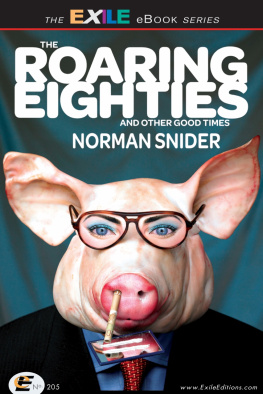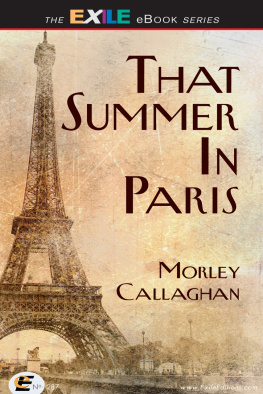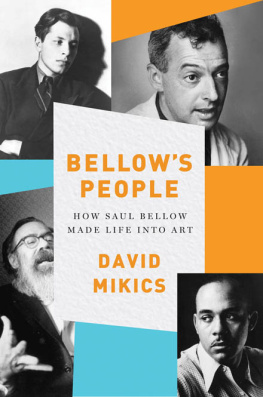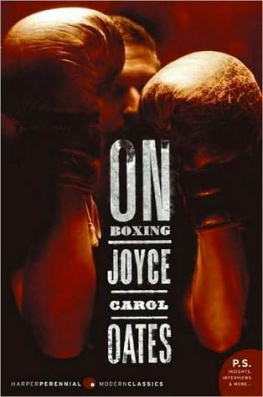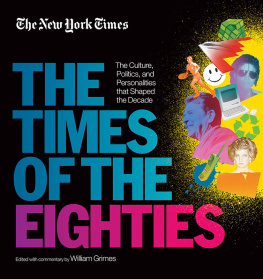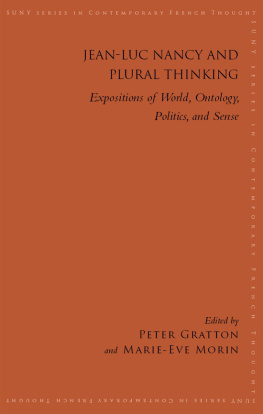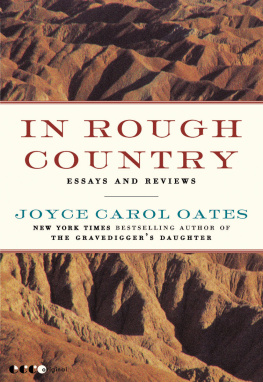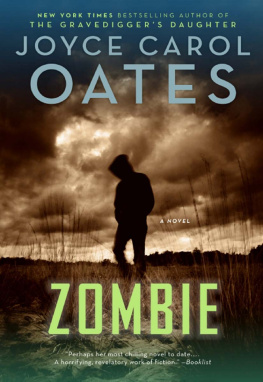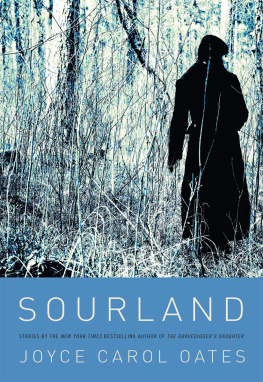As always,
For F.M.
CONTENTS
INTRODUCTION
ANXIOUS MONSTERS
I was with Tom Hedley, in the offices of Toronto Life magazine. At the time, he was that publications editor. Hedley had a set of moves I hadnt seen before. No underdog, he looked like a veteran ad exec type. With his penchant for a hybrid mix of high and low, unlike most Toronto editors, Hedley had a talent for putting out magazines that had sexual glamour. He had moved from the old Toronto Telegram to Esquire, in its irreverent golden age, where, as the youngest editor in its history, he sent quality-lit icons William Burroughs, Jean Genet and groovy Terry Southern to report on the Democratic party convention in turbulent 1968.
That day, Hedley and I discussed a profile of Glenn Gould I was working on, one of the first articles I had undertaken for Toronto Life. I was new to journalism, in thrall to its tawdry romance, a complete captive. In some recess of my mind, I kept the image of the Broadway boulevardier reporter of yesteryear a flower in his buttonhole, spats on his shoes, a quip on his lips, keeping a hoodlums coffee warm for him at the booth in Lindys, as the dude goes out to meet his doom on the steps of the cathedral. Thats who I wanted to be. That guy. Little did I know, but nothing could stop me from trying. And here we were, right on the cusp of the Roaring Eighties.
Fascinated by celebrity himself, Hedley was the kind of guy people talked about. Other men tried to emulate him. Like Jay Gatsby, Hedley had sprung out of some Platonic ideal of himself.
Originally from a military background out west, he acted as if he came from vast wealth. In his mid-thirties, Hedley looked like he had attended some Eastern U.S. boarding school and cultivated a socialite-on-a-spree style, tall, always pushing a Kennedyesque hank of hair off his forehead. He had the air of a nineteenth-century aesthete, possibly of noble lineage, and liked to edit manuscripts in bars and restaurants. Other editors went home every night to dull wives serving up roast chicken and mashed potatoes. Hedley prowled the night-life in the company of glamorous women and visiting notables, acting as if he was still immersed in the high life of Manhattan. He was a master of the grand gesture: sending bottles of good champagne to friends in restaurants. He would order up a limo in a moment. He considered extravagant, expensive gestures as his form of rebellion against the typical pinched Protestant sense of caution. Nobody in Toronto acted like this in 1980. It would be a few years before others caught on.
In New York, Hedley had absorbed the brawling manners of the White Horse Tavern and Cedar Bar where artists and writers cared enough to throw guys through plate-glass windows over differences of opinion. They were just that serious. Out on the tiles, Hedley loved to mess with dangerous people: transvestite rough trade, small-time Mafiosi drinking in low bars, their gorilla chests festooned with bling-bling. A writer had to step out and look around. Those were the kind of places you found good stories. Not every night ended in Emergency or a brawl, but enough did to keep it interesting.
More importantly, as an editor, Hedley stood in pugnacious opposition to the cramped style of much of Canadian media. He loved Andy Warhol and Pop Art, magazines were just part of a hip mix that included novels, movies, comics, you name it; an article could reflect it all. The key was to structure your piece like a novelist or short story writer by using fictions technical arsenal: point of view, panorama and scene. Out reporting, you had to be on the alert for items of dress, decor and especially spoken idiom. Sharply observed details were what gave a story conviction. Reading a great novelist like Raymond Chandler you knew exactly what a hotel lobby off Wilshire Boulevard was like in 1946, what kind of belted camel-hair coat the gigolo wore as he walked in, what the pink marble registration desk looked like. In order to write prose like this, you had to have a novelists insight into character, his feeling for rage and sorrow. And any good novelist had his own voice. I wanted my voice to be sharp and bright as a razor, like Coltranes tenor sax.
A few years previous, I had lived in a cool loft on Spadina, neighbour to the painter Gordon Rayner. I had occasionally sat in on bass with the Artists Jazz Band and had met the painters Graham Coughtry and Robert Markle, Hedleys good friend. These painters were known for their uninhibited figure studies, riots of sensual gorgeous colour, and I didnt see why journalism couldnt have the same colours too. The way they lived downtown also served as example. (Nearly thirty years later all those condo dwellers would follow in their antic footsteps, all unawares.) The Toronto painters were inner-city frontiersmen, searching out the ethnic restaurants, strip bars. Toronto was not New York or Paris, neither was it insignificant.
Of course there was much talk of the New Journalism at the time, of Wolfe, Thompson, Mailer, and Capote. But journalism that aspired to the status of literature was of far more ancient provenance. There were those very boulevardier New York reporters of the 1920s and 1930s whose outfits Wolfe sought to emulate with his white suits and double-breasted waistcoats. A forgotten New York newspaperman named Hickman Powell had written a wonderful book about Lucky Luciano called Ninety Times Guilty that read as well as any novel. Going back to the early nineteenth century, Thomas De Quincey would get loaded on tincture of opium, climb on the top the fastest stagecoach he could find and, with the wind rushing through his Byronic locks, just you know, thrill. Then he recorded the whole wild experience for the Edinburgh Review in a pioneer piece of personal journalism titled The English Mail Coach. Much more recently, there was Albert Goldmans novelistic biography of Lenny Bruce. It portrayed magnificently the greasepaint and gonorrhea world of small-time nightclub showbiz from which Bruce emerged. Writers like these were my inspiration.
Newspapermen hated all of this. They were often solemn freshwater owls who thought magazine articles were long, overwritten news stories. Hedley had returned to Toronto to elevate the genre. Unlike most editors, Hedley actually liked writers. He encouraged new voices and he urged you to find your own the more original and startling, the better. And he had patience with writers blocks and alcoholism and chronic depression and bad girlfriends and raging egos and all the rest of the ailments of the literary life. Just so long as you wrote well. He wanted you to forget everything you thought you knew about good magazine writing. He wanted you to loosen up.
If Burroughs was doing this, he told me, thered be purple monsters coming out of the toilet.
This was too good to be true.
After that invitation to freedom, I needed little prompting. Like thousands of others, I had made it through adolescence with the Beats, especially the Burroughs of Naked Lunch, as spiritual guide and example, minus the heroin addiction and gay sexuality. As far as I was concerned, in those days, he was the greatest writer since James Joyce. Kerouac and Ginsberg celebrated the joyous freedom of The Road but compared to Burroughs they were sentimentalists. Burroughs was an authentic literary outlaw, a gimlet-eyed observer of the absurdities and horrors of the Cold War era. Like Kerouac and Ginsberg, he was possessed of an incomparable vision of freedom. And like Bruce, he was funny, funny. For brave young writers of the era, the notion was: nothing is too horrifying to write about.
Next page
